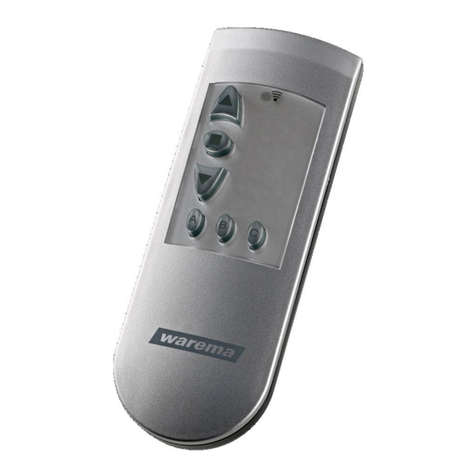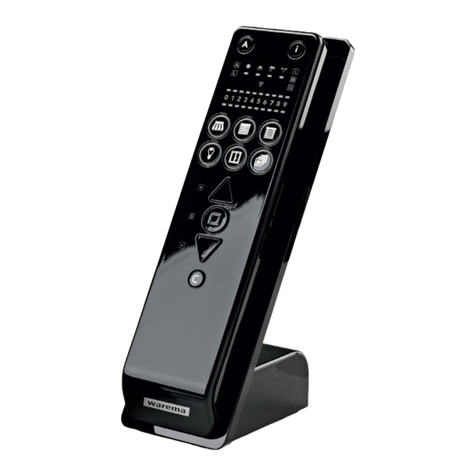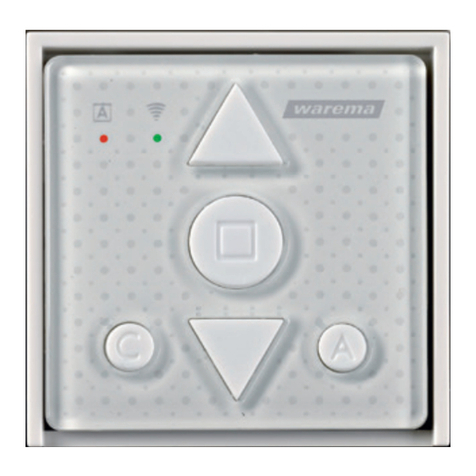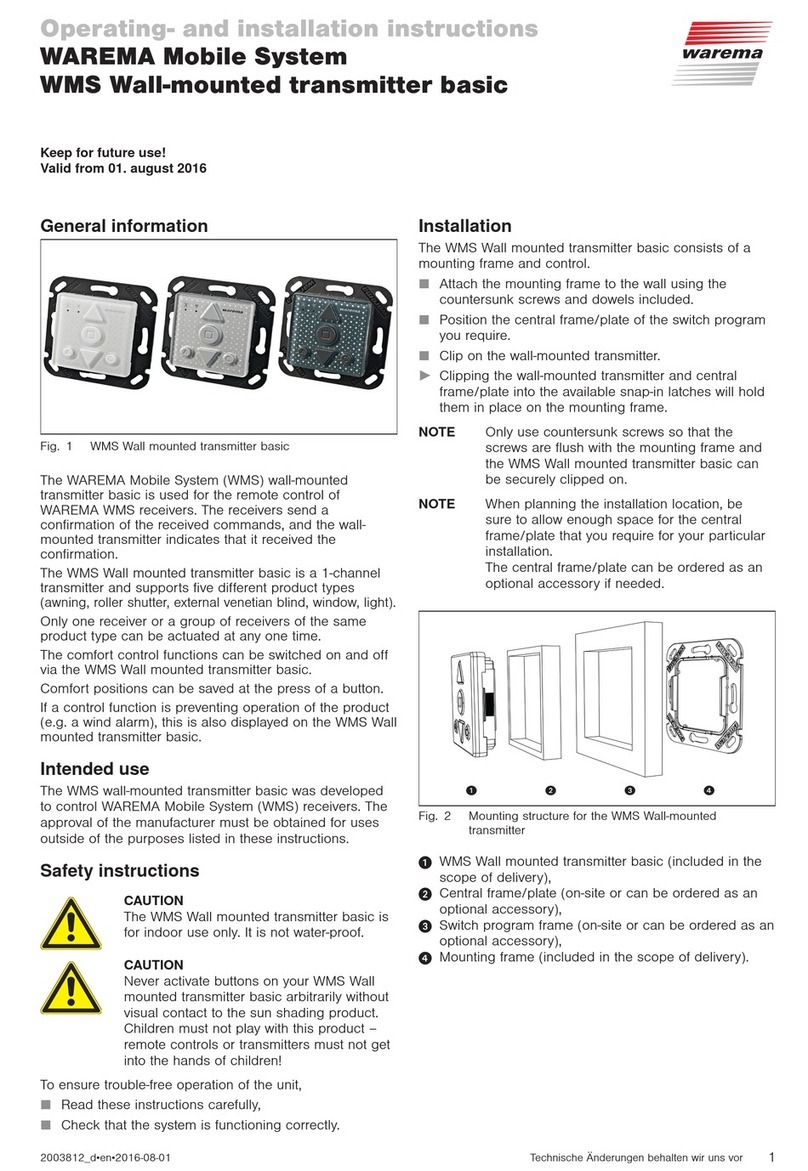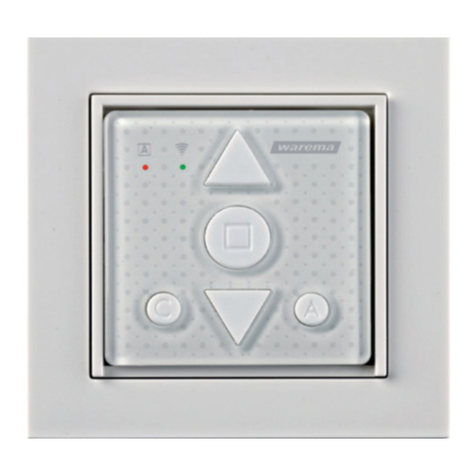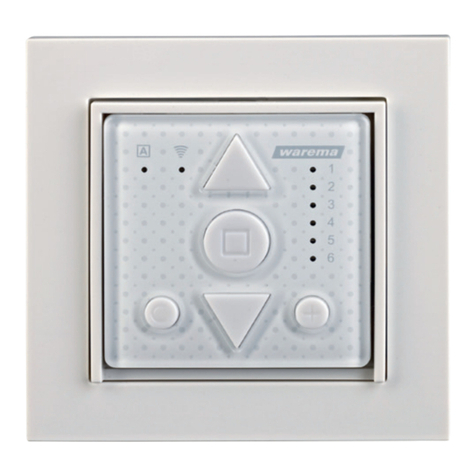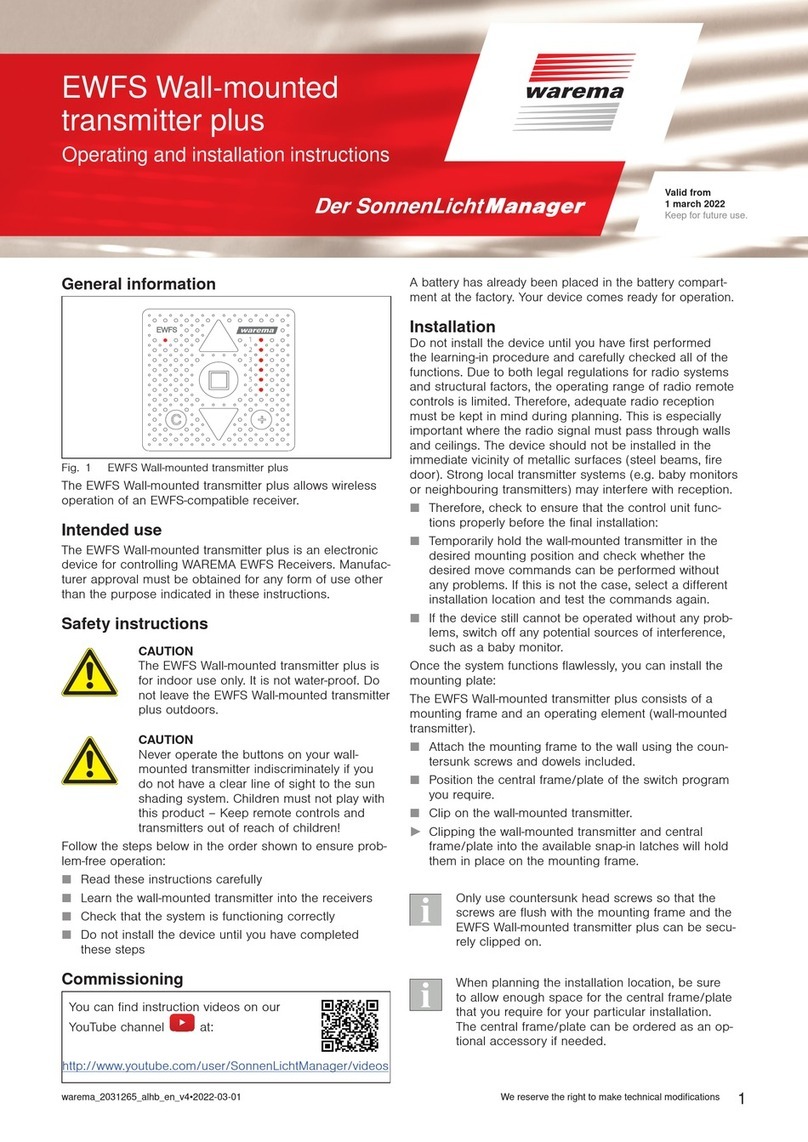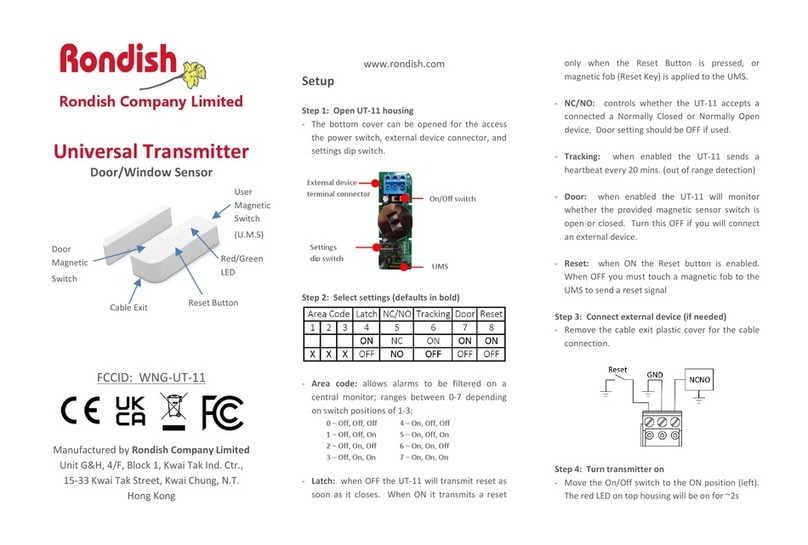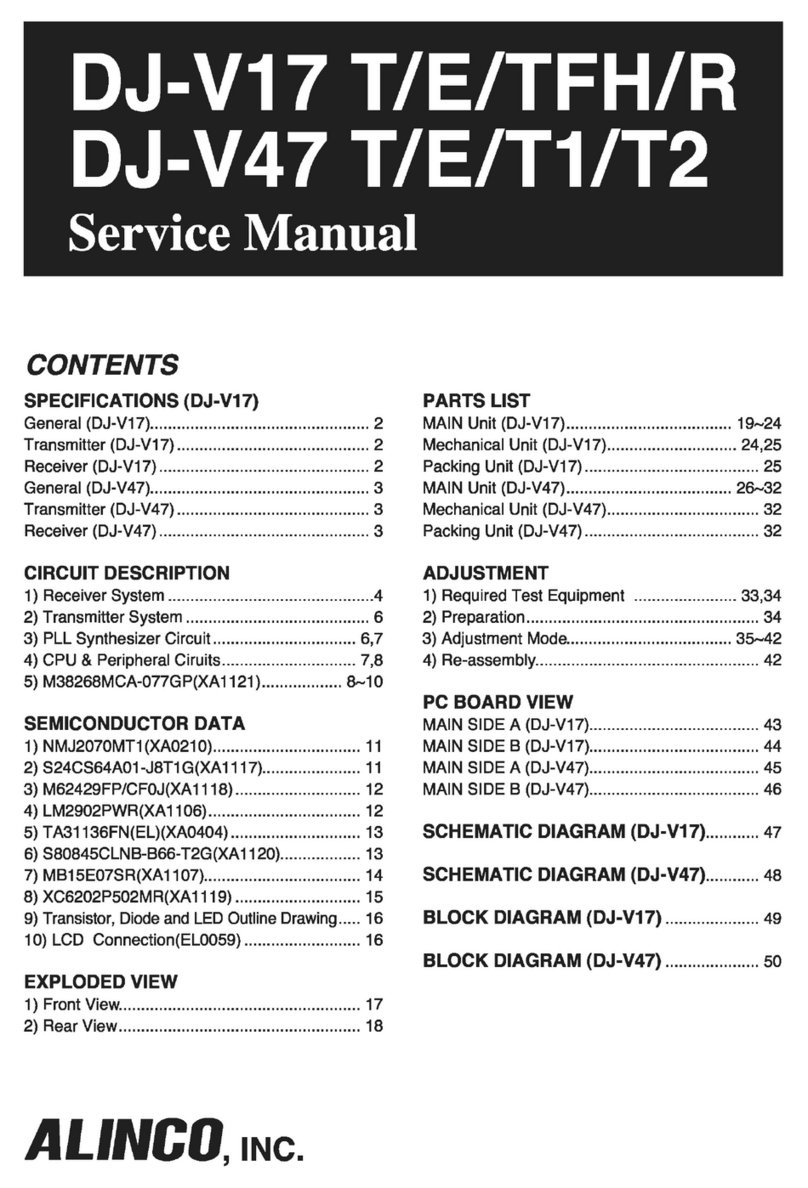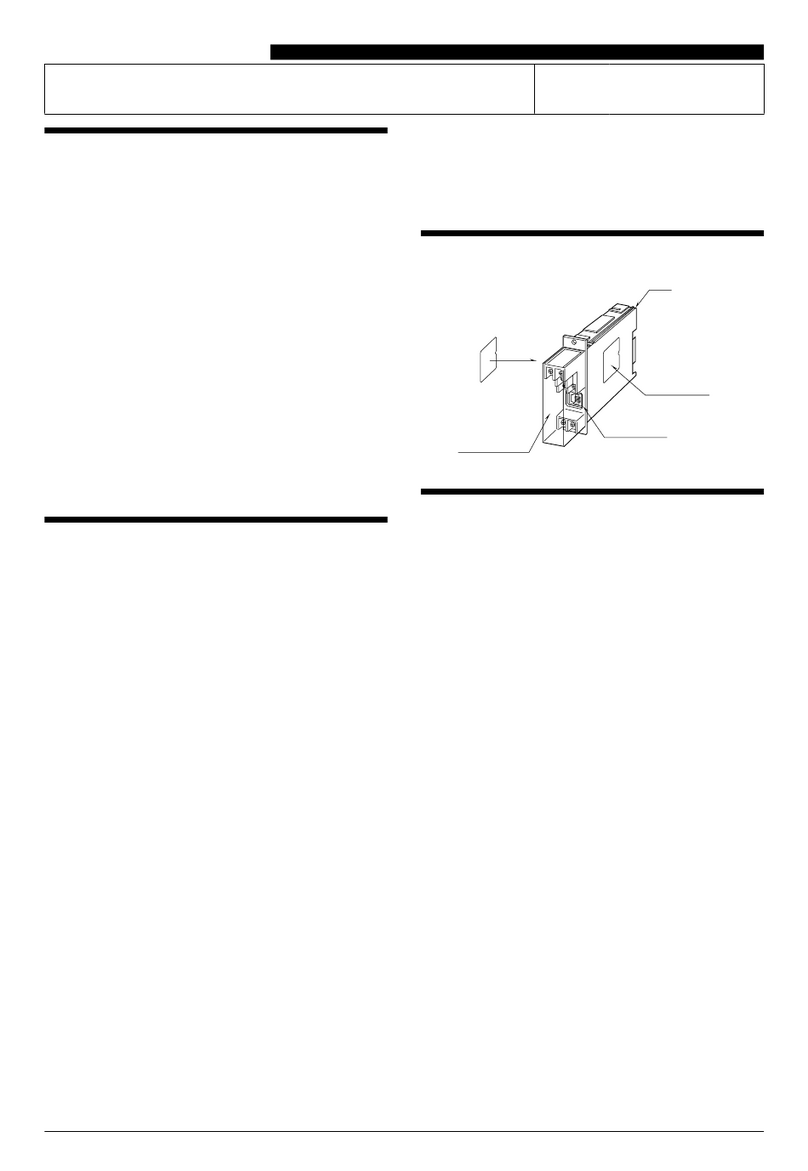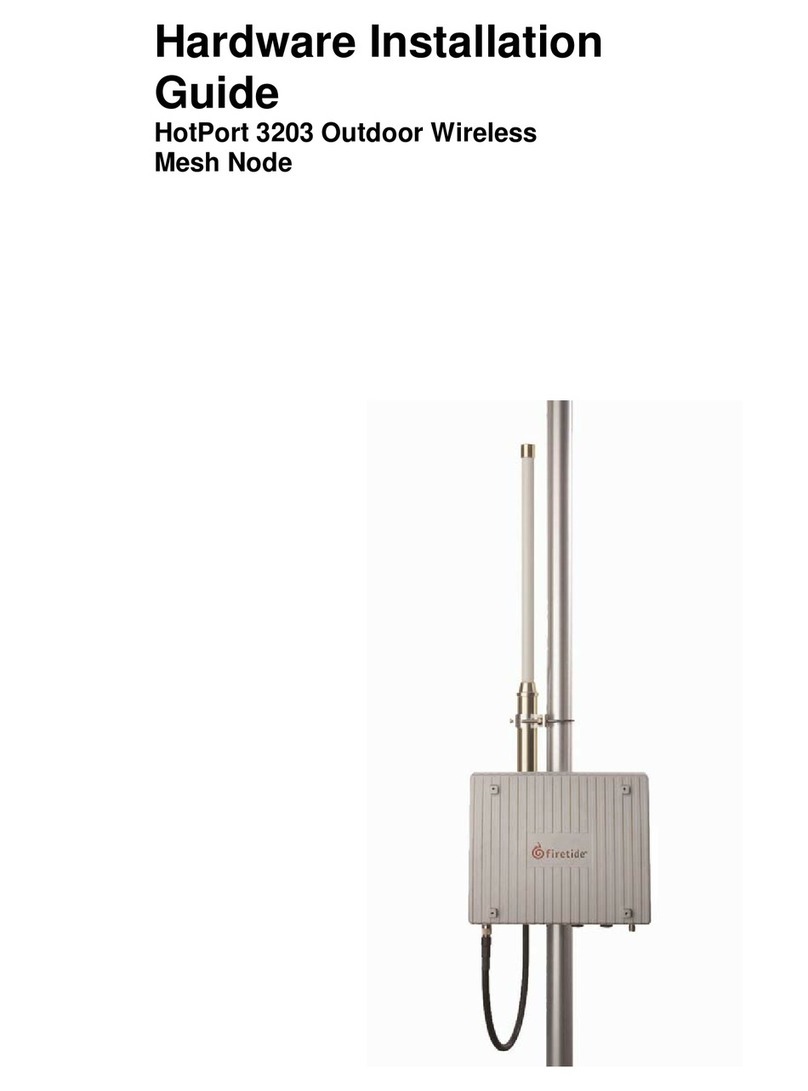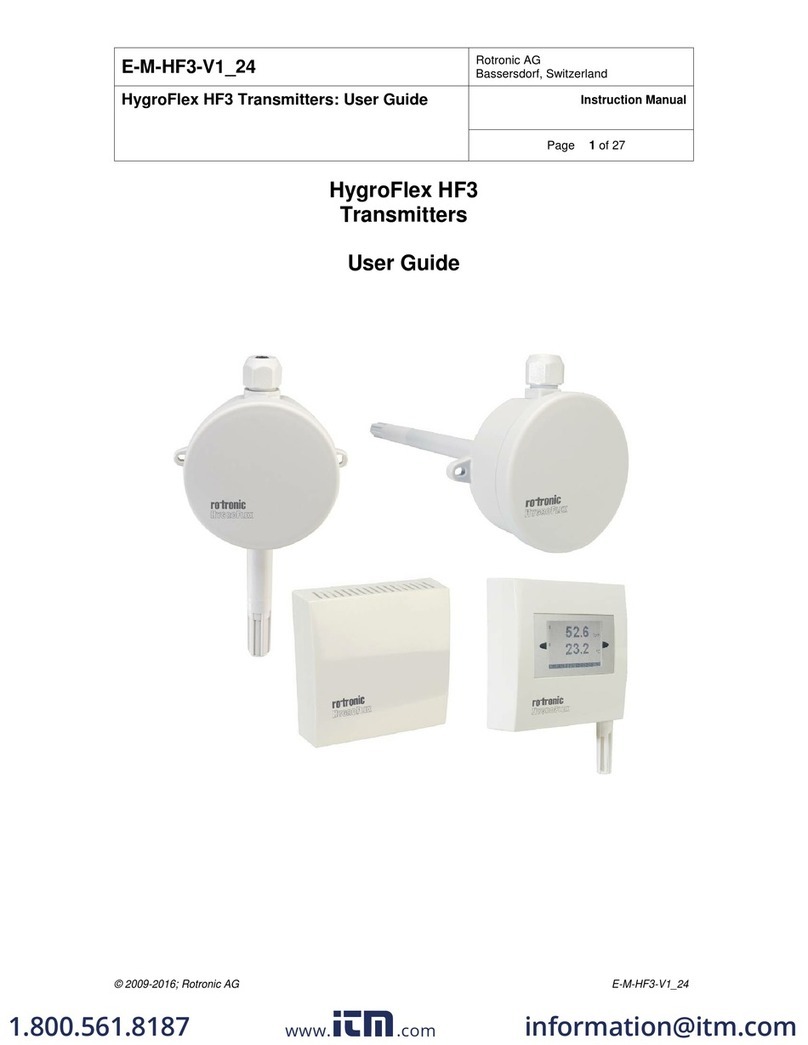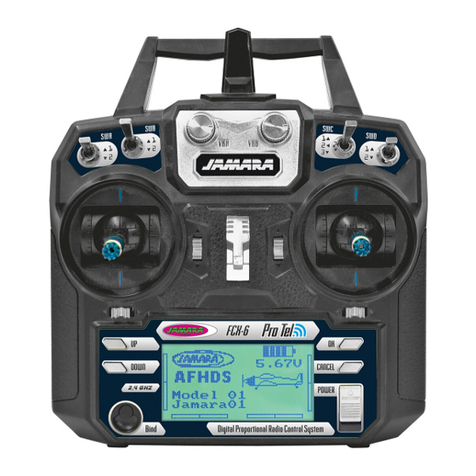
warema_890374_alhb_en_v6•2022-11-01We reserve the right to make technical modifications
8
Maintenance and cleaning
Replacing the batteries
Replace the batteries if the transmission LED lights up
orange after the hand-held transmitter is activated. If the
batteries are fully depleted, the hand-held transmitter can
no longer be activated.
In order to replace the batteries (type AAA, IEC LR03,
"Micro"), open the battery compartment (Fig. 3) and
insert the new batteries. Ensure the correct polarity: The
plus (+) and minus (-) poles of the batteries must match
up with the markings in the battery compartment.
Only use new batteries of the same type and always
replace both batteries. Use high-grade batteries –
inexpensive batteries may leak and damage the device.
If the device is not to be used for an extended period,
please remove the batteries. Do not use rechargeable
batteries!
Cleaning
Clean the housing with a soft, dry cloth. Do not use
detergents, cleaning agents, solvents, abrasive substances
or steam cleaners!
Liability
Failure to comply with the product information in these
instructions and any use of the device other than its
intended use may result in the manufacturer refusing to
honour warranty claims for product damage. In this case,
liability for secondary harm to persons or damage to
property will also be excluded. Observe the information
in the operating instructions for your sun shading system.
Liability is also excluded for damage to the sun shading
system resulting from operation under icy conditions.
Obligations for the disposal of electrical
devices
A marking with this symbol indicates the following
obligations under the scope of legal regulations:
The owner of this electrical device must dispose of it
separately from unsorted municipal waste for further
recycling.
Used batteries and accumulators that are not enclosed
in the old device, as well as lamps/bulbs that can be
removed from the old device without breaking, must be
disposed of separately.
Distributors of electrical devices and disposal
companies are obliged to take back the equipment free
of charge.
The owner must take it upon themselves to delete any
personal data contained in the electrical device prior to
disposal.
Technical data
WMS Hand-held transmitter
comfort min. typ. max. Unit
Supply
Battery type 2 x AAA (IEC LR03, "Micro")
Operating voltage 2.4 3.0 3.2 VDC
HF transceiver
Transmission frequency 2.40 2.48 GHz
Transmission power 10 dBm
Reception sensitivity -95 dBm
Operating range
(environment without
interference)
30 m
Housing
Dimensions (L×W×H in mm) 200 × 50 × 20
Degree of protection IP30
Safety class III
Miscellaneous
Conformity Specified under
www.warema.de/ce
This device complies with the EMC directives for use in
residential and commercial areas.
WAREMA Renkhoff SE declares herewith that the radio system
type WMS Hand-held transmitter comfort is in compliance with
the 2014/53/EU guideline.
Ambient conditions
Operating temperature 0 50 °C
Storage temperature 0 70 °C
Humidity
(not condensing)
10 40 85 %Hrel
Degree of soiling 2
Article numbers
WMS Hand-held transmitter
comfort
1002767
Wall support/table stand for
WMS Hand-held transmitter
comfort
1002768
WAREMA Renkhoff SE
Hans-Wilhelm-Renkhoff-Str. 2
97828 Marktheidenfeld
Germany
